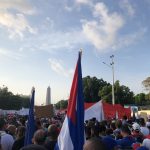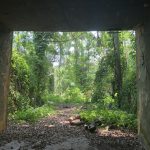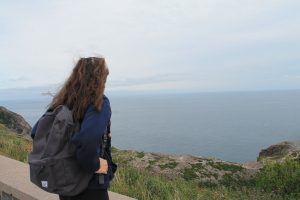Hola mis amigos! Welcome to another one of my blog posts, this one being a little bit more interesting than usual. You may be wondering why I opened this post in Spanish, the main reason being that for our Grade 12 PLP trip (the last one ever), we travelled to the bright and bustling land of Cuba for TWO WHOLE WEEKS! This trip was fast-paced, eye-opening, and completely unforgettable. It gave me a new lens when I look at the world, and showed me that not everything I hear about or assume is true at all.
In preparation for this trip, we had to actually know what we were going down to study and see. Personally, I knew absolutely nothing about any Cuban history, so I knew I needed to work hard on getting a grasp on the rich knowledge of the country, in order to work on our projects being introduced. In class, we were looking at the Iranian Revolution (in-depth) and actually weren’t introduced to the Cuban Revolution until a while later, basically until we were leaving for our trip. We were told to watch an 8-series documentary called “Cuba Libre”, which was extremely interesting, but simultaneously time consuming. I would have watched them all, if I had more time to do so.
Our projects were all based around the Cuban Revolution and how a movement or struggle can unite a group or people. We were tasked with creating a “coffee-table” styled book, to depict the important events of the Revolution, and tell the story through different historical lenses. It was broken up into chapters, each group creating a different chapter using a different historical lens. Anatolia and I ended up working together for our part of the book, which is both a blessing and a curse. We work well and hard together, but basically only when we are feeling like it. I’ll touch back on this in a bit.
The trip itself was a breathtaking experience with many ups and downs and wild adventures. We were fortunate enough to have an experienced and knowledgable guide, Alastair, travelling with us through the country. This was a huge help when it came to things we didn’t know or had questions about, because he was there to answer with, what seemed like, WIKI articles for just about anything. He also coordinated our whole trip itinerary, and knew the best things to see, places to eat, and things to buy. It was so valuable to have him guide us through Cuba, and reveal all the hidden gems that this underrated country had to offer us.
Let me just say, Cuba is not all you might imagine it to be. If you have ever travelled there, you may have only been to Varadero Beach and explored the resorts and lovely shoreline, or to the capital, Havana, and felt the bustle of the city. There is so much more to Cuba beyond Varadero, obviously, but I never really thought of it. This coastline is what you see advertised in the media, so I assumed that was it. But when we were there, taking a bus from Havana, to Cienfuegos, to Trinidad, to Santa Clara, to Viñales, back to Havana, and then to Varadero Beach, I was alive with wonder, curiosity, and pure amazement of this place around me. Everything we saw was significant to the history in some way, and this was both shocking and brilliant at once.
While on the trip, we were given time to work on our projects (the one that Anatolia and I were working on together). Our first idea for the event we were going to research was the shifts in the Cuban Economy before and after the Cuban Revolution, which was very broad, and not necessarily something either of us were interested in. We also were tasked with looking at this event through a historical significance lens, which I found to be a great lens to be looking through. We slowly started our work reluctantly, and were silently on the lookout for a better topic. This topic ended up right under our feet on the trip on a little outing we took on one of our last days in Havana. We were hiking in the middle of Cuban jungle (it seemed) and were hot, sticky, and on the verge of heat stroke. Alastair was leading us to a real decommissioned bunker used to store weapons during the Cuban Missile Crisis. We we reached the very well hidden house of concrete, Anatolia and I knew this was so much cooler than our previous topic. I knew for sure that this was what I wanted to cover in our book chapter. So we shifted our ideas, research, and information to fit with our new story of how the bunker was a significant piece of Cuban History, and were thriving in our newfound interest.
Because of the fact that we changed our topic so late in the trip, we didn’t have the wide variety of media and visuals that we had hoped for, to add to our book. But with photo and video from everyone else on the trip, we ended up having just enough to create a product that we are both very proud of.



















